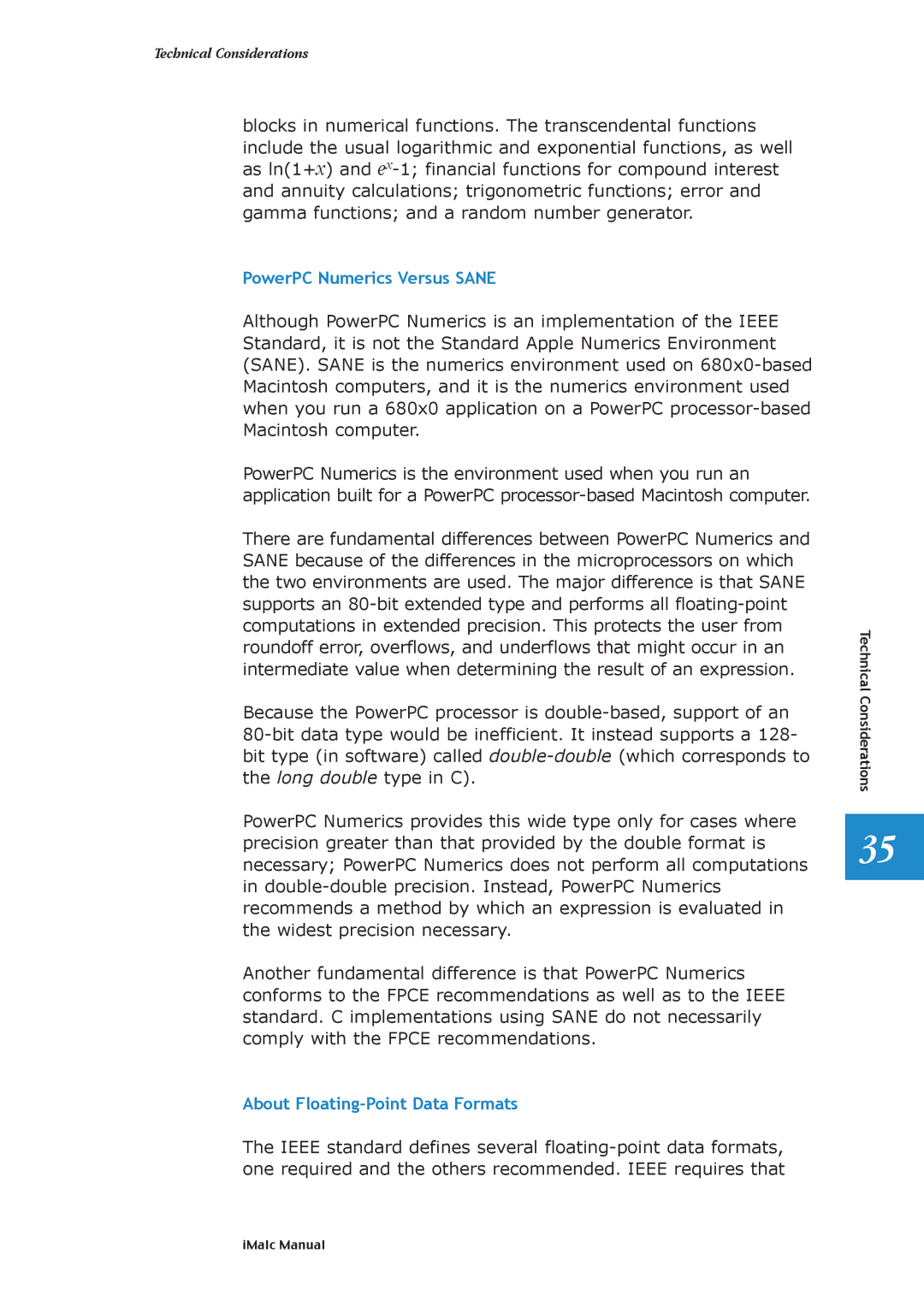
Technical Considerations
blocks in numerical functions. The transcendental functions include the usual logarithmic and exponential functions, as well as ln(1+x) and
PowerPC Numerics Versus SANE
Although PowerPC Numerics is an implementation of the IEEE Standard, it is not the Standard Apple Numerics Environment (SANE). SANE is the numerics environment used on
PowerPC Numerics is the environment used when you run an application built for a PowerPC
There are fundamental differences between PowerPC Numerics and SANE because of the differences in the microprocessors on which the two environments are used. The major difference is that SANE supports an
Because the PowerPC processor is
PowerPC Numerics provides this wide type only for cases where precision greater than that provided by the double format is necessary; PowerPC Numerics does not perform all computations in
Another fundamental difference is that PowerPC Numerics conforms to the FPCE recommendations as well as to the IEEE standard. C implementations using SANE do not necessarily comply with the FPCE recommendations.
About Floating-Point Data Formats
The IEEE standard defines several
Technical Considerations
35
iMalc Manual
